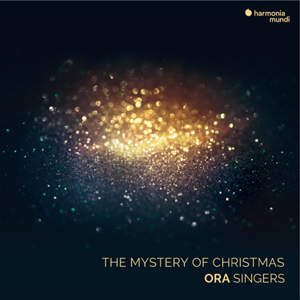First things first. If you want to hear Morten Lauridsen’s setting of his wildly popular O magnum mysterium the way it should be heard, this performance by Suzi Digby and her ORA Singers is the one–surely the most affecting and successful among more than a few dozen recorded and live performances I’ve heard, most of which were very fine. This one, which concludes the program, is special for the way it almost uniquely captures the work’s resolutely flowing harmonic wall of sound–and my only question is how these 23 singers did it with only four–four!–basses. This is a supremely textural piece that depends not only on consistent and careful balances among parts, but on a solid bass foundation, especially at its famous climactic moment near the end. But somehow (again, with only four basses), the whole thing comes off here like nowhere else–and although the rest of the disc has its memorable moments, this extraordinary ending will leave you both very satisfied and not necessarily able to remember many of the earlier pieces with the same degree of enthusiasm.
There are 18 other pieces on the disc–and these days, a choral Christmas program typically focuses on modern works–often by composers you’ve never heard of–along with a few early pieces, here by Byrd and Tallis and several anonymous medieval songs–and something or two or three by established contributors to the genre, here represented by Judith Weir, John Rutter, and Steven Sametz. These compilations, when wrongly chosen and misguidedly organized, sometimes result in a frustrating and disorienting experience for the listener, veering from a standard Britten piece, or Vaughan Williams or Willcocks arrangement, to a wildly dissonant, stylistically “out-there” work by the latest cool King’s College composer fave, and then back again to a traditional version of In the bleak mid-winter or Balulalow.
But not here. Yes, the majority of the works will not be familiar to most listeners–Adrian Peacock’s Venite, Gaudete!; Jamie W. Hall’s As I lay upon a night; Ben Rowarth’s There is no rose; Thomas Hyde’s Sweet was the song; Cecilia McDowall’s Now may we singen; or Fredrik Sixten’s Mary’s Lullaby (Silent Night). But these are almost all thoughtfully conceived and well written and go together as a cohesive concert program–only Roderick Williams’ O Adonai, et Dux domus Israel, at seven minutes, seems a bit disorganized and somewhat long for its material–although it has its “moments”. Sixten’s “jazzy” version of Silent Night and Sametz’s appropriately, infectiously lively Gaudete are highlights, as are Richard Allain’s spicy setting of Coventry Carol and the Byrd and Tallis entries (O magnum mysterium and Videte miraculum, respectively).
It’s not easy these days to come up with a new Christmas recording program that will entice and inspire serious fans of this long-established, very specialized genre of choral music–but this one makes a fine and I think very successful effort. And really, the Lauridsen performance is one to be savored.
































